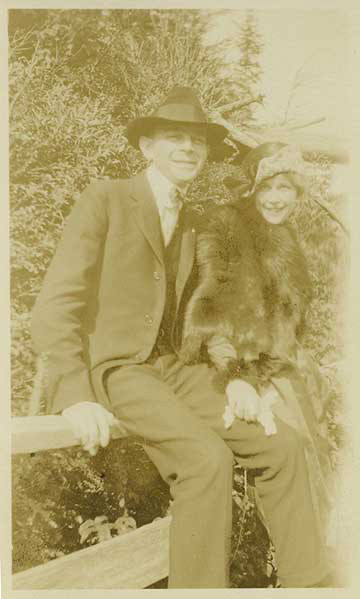Ziegler was dean of the Ketchikan legal communityBy DAVE KIFFER June 02, 2022
Adolph Holton Ziegler was 86 and was stricken at a Seattle hotel and later died at one of the area hospitals on May 17, 1972. At the time of his death - he was the oldest and longest serving member of the Alaska Bar Association, having become a member in 1915. His death came just about a month before the Ketchikan Community College - now the University of Alaska Southeast-Ketchikan Campus - planned to name its main building after him. Ziegler spent more than two decades serving on the Alaska Territorial School board, including a lengthy spell as board president. Ziegler was born in Easton, Maryland on Dec. 20, 1889 and was educated there at Easton High School and Maryland College and Sadlers Business College. According to his biography on the University of Alaska website, he began to study law while in high school with a local attorney named Stewart who had served in the Confederate Army during the Civil War. He moved to Juneau Alaska in 1913 and continued to study law with attorney Z.R. Cheney until he passed the bar exam in 1915. He served in the US Navy Intelligence Service in World War I and came to Ketchikan in 1919. He was instrumental in forming a local veterans' group that became the American Legion Post #3 and he was also a charter member of the Ketchikan Elks Lodge #1429. He was the senior member of the longtime local law office, Ziegler, Ziegler and Cloudy and was president of the Ketchikan Bar Association from 1959 until his death. He was also the chairman of the board of directors of the First National Bank in Ketchikan, serving since the bank's founding in 1924 and was bank president for many years. He was the mayor of Ketchikan in 1938-39 and was in the territorial legislature from 1928 to 1933. He was an active member of the Democratic party and his son, Robert "Bob" Ziegler was a state senator from 1965-1987. He was also survived by his wife Katharine. Over the years, Ziegler represented hundreds of local residents and groups in court. He represented the powerful, such as banks and governments, and also the indigent. He represented canneries and fish pirates alike. Three of his cases were particularly noteworthy in Ketchikan history. He represented the local Ketchikan School Board when it was sued in 1929 by the family of Irene Jones in 1929 when the board reversed local policy and attempted to bar Natives of mixed race from attending primarily white schools. (See "Ketchikan Schools Partly Desegregated in 1929, SITNEWS, Feb. 06, 2014). The school district lost and was ordered to continue to allow mixed raced students to attend Main School and White Cliff School. He represented "Black Matt" Berkowitz in 1930, a local ne'er do well who was convicted of bootlegging during the latter stages of Prohibition, (See "Black Matt Berkowitz and Son Nick, A Ketchikan Story," SITNEWS, Aug. 19, 2015). Berkowitz was convicted and then tracked down one of his cohorts, Phil Dohm, who had testified against him, in the Mint Pool Hall on Barney Way. Berkowitz shot Dohm and then killed himself. Ziegler also represented one of the few Alaskans to be executed in the territory. Nelson Charles. ( See "Abolition of Alaska's Death Penalty, SITNEWS, Oct. 15. 2005). Charles was convicted of stabbing his mother-in-law in 1938 in Ketchikan and executed in Juneau that same year. Nearly all of the Alaskans who received the death penalty during territorial days were non-whites like Charles. White people convicted of similar murders were routinely sentenced to prison instead. When the Alaska Constitutional Convention met in 1955 to develop a constitution for the proposed state, the death penalty was specifically forbidden for state crimes because it has been clearly used only on non-white felons. Ziegler was also indirectly responsible for the title of a book about the Alaska territorial legal system, "The Biggest Damn Hat" by Pamela Cravez. When researching the book, Cravez interviewed Ziegler's son, Bob. And Bob Ziegler passed on a story his father had told him of the early days. The story involved another pioneering attorney George Grisby and took place in the 1920s. Grigsby, according to Ziegler, was representing a local fish pirate name Johnny Starkloff. The prosecution's case apparently rested on a familiar hat of Starkloff's that had been left at the scene. Throughout the trial, the evidence hat sat on the prosecution's table. During one of the breaks in the trial, Ziegler said that Grigsby went to a local haberdasher and bought an identical hat, only larger. In Ziegler's word's it was the "biggest damn hat he (Grigsby) could find." When Starkloff was on the stand the prosecutor asked him if it was his hat and Starkloff said no. When asked to try on the hat, he did and the hat nearly completely covered his head. The case, according to Ziegler, was "laughed out of court." Over the years, Ziegler faced off against pioneering Ketchikan Native attorney William Paul, including the Irene Jones case, numerous times. ( See "William Paul was the Father of Native Land Claims, SITNEWS, Feb. 16, 2009.) In a sense, they are still facing off. The Paul Building at the University of Alaska-Southeast Ketchikan campus sits across the parking lot from the Ziegler Building. On the Web:
|
||||

